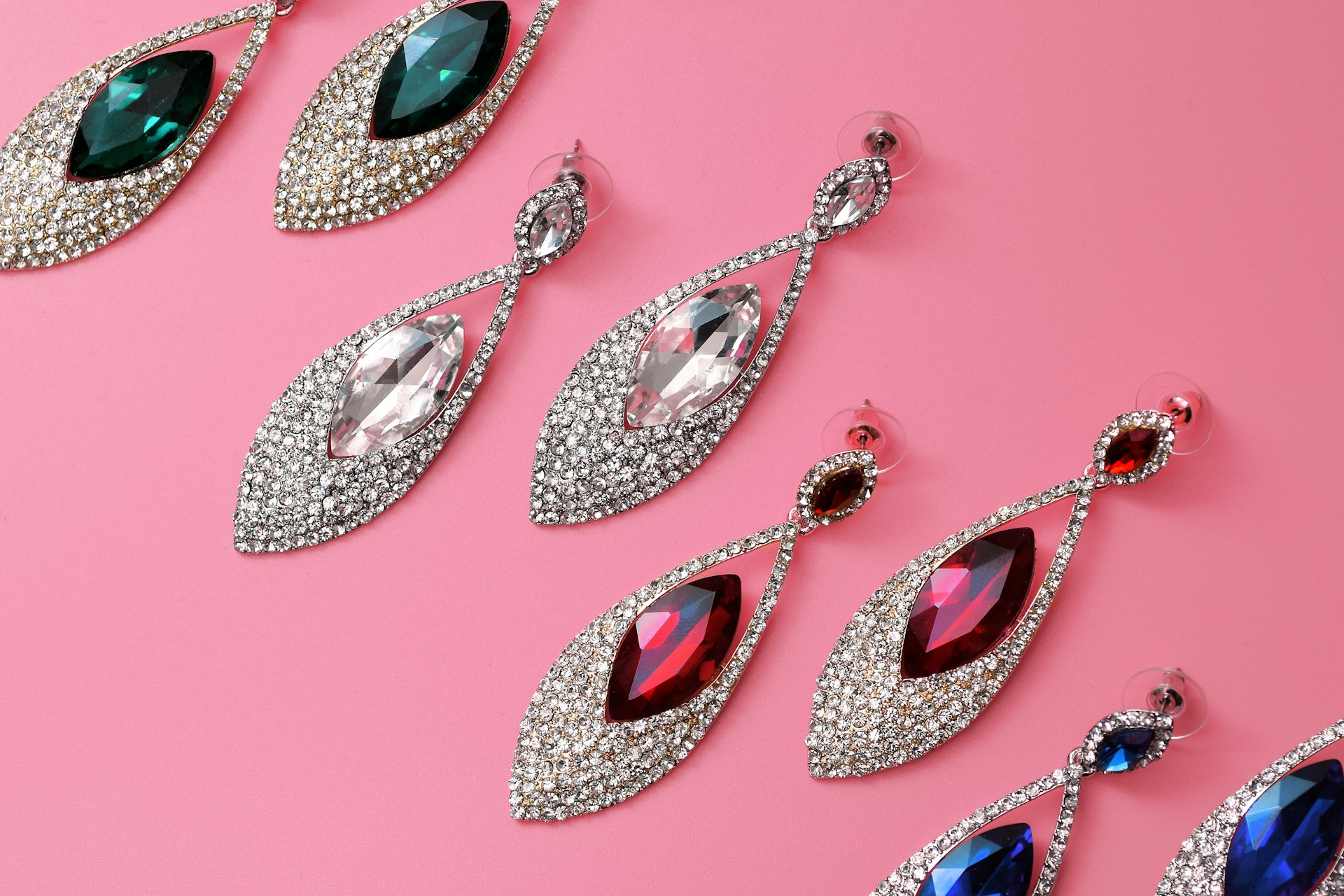Humidity can wreak havoc on your beloved jewelry, leading to unsightly tarnish and diminished shine. Understanding how to care for your pieces is essential, especially in the moisture-laden UK climate. This guide offers practical tips to protect your jewelry from tarnishing, ensuring it remains a dazzling part of your collection. Discover effective methods tailored for humid conditions and learn how to preserve the beauty of your accessories for years to come.
Understanding Tarnish and Humidity
Tarnish is a form of corrosion that occurs when metals react with non-metal compounds, often resulting in a dull or discoloured surface. Humidity effects play a significant role in this process. High humidity levels can accelerate tarnishing by providing moisture that facilitates chemical reactions on the metal surface. This is especially true for metals like silver and copper, which are highly susceptible to tarnish.
Also to read : Mastering Color Theory: Your Ultimate Guide to Choosing Outfits for Key Meetings
Jewelry maintenance becomes crucial in humid environments to prevent tarnish. Regular cleaning and proper storage can mitigate the humidity effects on your valuables. Using anti-tarnish strips or silica gel packs in jewelry boxes can help absorb excess moisture, reducing the risk of tarnish.
Common metals affected by humidity include:
Also read : Mastering Liquid Eyeliner Techniques for Asymmetrical Eyelids: Achieve a Harmonious Eye Look
- Silver: Known for its beauty, silver tarnishes quickly due to sulfur compounds in the air, accelerated by humidity.
- Copper: This metal develops a green patina when exposed to moisture, a result of oxidation.
- Brass: A copper alloy, brass tarnishes similarly to copper, often requiring regular polishing.
Understanding the relationship between tarnish and humidity can help in effective jewelry maintenance, ensuring your pieces remain lustrous and beautiful.
Best Practices for Jewelry Care in Humid Climates
Caring for your jewelry in a humid climate requires a few adjustments to your routine. Daily care routines are essential to maintain the luster and longevity of your pieces. Begin by wiping your jewelry with a soft cloth after wearing it. This simple step removes any moisture or oils that could contribute to tarnish.
Regular cleaning is crucial. Use mild soap and water to gently clean your jewelry, ensuring you rinse thoroughly to avoid soap residue. This practice helps prevent the accumulation of substances that can lead to tarnish over time.
Protective measures are also vital in minimizing tarnish. Storing your jewelry in a dry environment is key. Consider using airtight containers or jewelry boxes with anti-tarnish lining. Adding silica gel packs can further absorb excess moisture, providing an extra layer of protection.
For those particularly concerned about tarnish, anti-tarnish strips are a worthwhile investment. These strips neutralize the effects of humidity on metals like silver and copper, preserving their shine. By incorporating these jewelry care tips into your routine, you can effectively combat the challenges posed by humid climates, ensuring your treasured pieces remain beautiful.
Material-Specific Jewelry Care Strategies
Understanding the unique needs of different jewelry materials is essential for effective care. Each material requires specific care instructions to maintain its beauty and longevity.
Caring for Silver Jewelry
Silver jewelry is prone to tarnish, especially in humid conditions. To care for silver, regularly polish it with a soft cloth and use a silver cleaning solution. Avoid exposing silver to harsh chemicals and store it in anti-tarnish bags.
Caring for Gold Jewelry
Gold jewelry is less reactive but still requires attention. Clean gold pieces with mild soap and water, then dry with a soft cloth. Avoid abrasive cleaners that can scratch the surface. Store gold separately to prevent scratches from harder metals.
Caring for Costume Jewelry
Costume jewelry, often made from mixed metals and materials, needs gentle care. Clean with a damp cloth and avoid submerging in water to protect the finish. Use a soft brush for intricate designs and store in a dry area.
By following these metal-specific care instructions, you can preserve the finish and luster of your jewelry, ensuring they remain a cherished part of your collection.
Proper Jewelry Storage Solutions
Ensuring your jewelry storage is optimal can significantly reduce tarnish and prolong the life of your pieces. The right environment is crucial in preventing tarnish, especially in humid conditions. Aim to store jewelry in a cool, dry place, away from direct sunlight and moisture.
Ideal Storage Environments
For effective jewelry storage, consider using airtight containers or boxes lined with anti-tarnish material. These environments help maintain low humidity levels, minimizing tarnish risk.
Recommended Storage Solutions
Invest in anti-tarnish pouches or cloths to wrap individual pieces. These specialized materials are designed to absorb harmful compounds in the air, protecting metals like silver and copper.
- Anti-tarnish strips: Place these in jewelry boxes to neutralize humidity effects.
- Silica gel packs: Add these to absorb excess moisture.
Organizing Jewelry
Proper organization within storage can further reduce exposure to humidity. Use dividers or compartments to separate pieces, preventing scratches and tangling. Hanging organizers can be useful for necklaces, allowing air circulation and easy access. By adopting these jewelry storage solutions, you can effectively combat tarnish and keep your collection in pristine condition.
Additional Tips to Prevent Jewelry Tarnish
To enhance jewelry longevity, incorporating anti-tarnish techniques into your routine is essential. These protective measures can significantly reduce the risk of tarnish and keep your pieces looking their best.
Using Anti-Tarnish Cloths and Sprays
Consider using anti-tarnish cloths to gently wipe your jewelry after each wear. These cloths contain special compounds that help neutralize tarnish-causing elements. Additionally, anti-tarnish sprays can be applied to create a protective barrier, further safeguarding your jewelry from moisture and air exposure.
Avoiding Common Pitfalls
One of the most effective protective measures is avoiding common mistakes, such as wearing jewelry while swimming. Chlorine and saltwater can accelerate tarnish and damage delicate pieces. Always remove jewelry before swimming or engaging in activities that expose it to harsh conditions.
The Role of Climate Control in Jewelry Care
Maintaining a stable environment is crucial for jewelry longevity. Use dehumidifiers in storage areas to control moisture levels, preventing tarnish. Keep jewelry away from direct sunlight and heat sources, as these can exacerbate tarnishing. By implementing these strategies, you can ensure your jewelry remains beautiful and tarnish-free.
Signs Your Jewelry Needs Immediate Attention
Regular jewelry inspection is crucial to maintaining the beauty and longevity of your pieces. Spotting early signs of tarnish can prevent further damage and preserve their value. Look for a dull or discoloured surface, as these are clear indicators of tarnish. If you notice these signs, it’s time to take action.
Identifying Early Signs of Tarnish
Early tarnish often appears as a slight yellowing or darkening of the metal. For silver, this may manifest as a light, greyish film. Tarnish identification at this stage allows for easier cleaning and restoration. Regular inspections can help catch these early signs before they become more severe.
When to Seek Professional Cleaning Services
If your jewelry has developed extensive tarnish or if you’re uncertain about cleaning it yourself, consider professional services. Jewelers have specialized tools and solutions that can safely restore your pieces without causing harm. Seeking expert help ensures your jewelry is cleaned effectively, maintaining its integrity.
Importance of Regular Inspections for Jewelry Care
Incorporating regular inspections into your maintenance routine is vital. By routinely checking your jewelry, you can identify problems early, ensuring your pieces receive the necessary care. This proactive approach not only preserves the aesthetic appeal of your jewelry but also extends its lifespan.
Resources for Further Learning
Enhancing your knowledge on jewelry care can be greatly beneficial. There are numerous jewelry care resources available, ranging from books to online platforms, that offer expert advice and DIY maintenance tips.
Recommended Books and Guides
For those who prefer a traditional approach, several books provide comprehensive insights into jewelry maintenance. Titles like “Jewelry Care and Repair” offer detailed instructions on cleaning and storing various types of jewelry. These guides are invaluable for anyone looking to deepen their understanding of effective care practices.
Online Resources and Communities
The internet is a treasure trove of jewelry care resources. Websites and forums dedicated to jewelry enthusiasts provide a platform for sharing expert advice and DIY maintenance techniques. Engaging with these communities can offer practical solutions and tips from experienced individuals.
Infographics and Visual Aids
Visual learners may benefit from infographics that illustrate effective care practices. These visual aids simplify complex information, making it easier to understand and implement. By utilizing these resources, you can ensure your jewelry remains in pristine condition, enhancing both its beauty and longevity.













